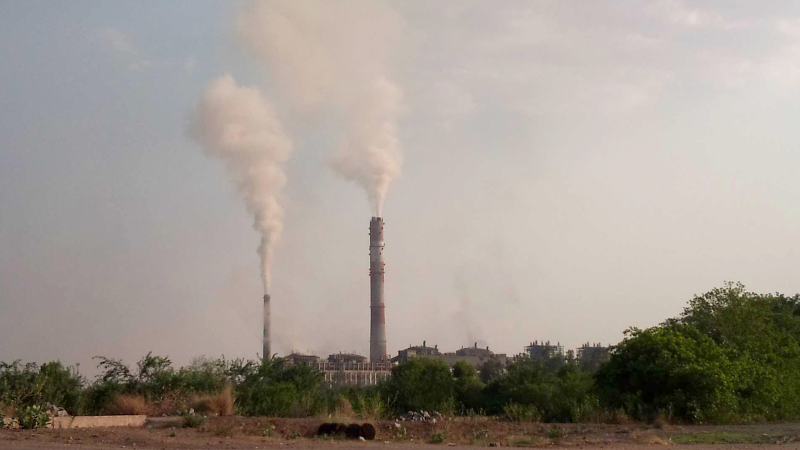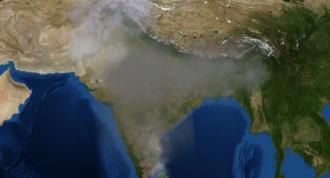
Pollution remains responsible for approximately 9 million deaths per year, or one-sixth of the deaths worldwide according to a report that the Lancet Commission on pollution and health released a few days ago (17 May 2022). This echoes the similar concern it raised in its earlier report in 2017. The recent report has been updated based on the data obtained from the Global Burden of Diseases, Injuries, and Risk Factors Study 2019. The Lancet Commission report also estimates that the economic losses due to pollution, as a proportion of GDP, are approximately 1% of GDP.
Clearly, the threat posed by different forms of pollution and critically of air pollution remains to be widely appreciated, particularly in the administrative and decision-making arena. Every winter, the Indo-Gangetic Plains have to bear the brunt of air pollution largely caused by stubble burning besides industrial emissions and automobile exhausts. The pollution also often engulfs the National Capital Region around New Delhi and gains adequate attention. However, the efforts to curtail them have not yet borne results. It is thus critical to have a deeper understanding of the processes that are at play in the atmosphere due to pollutants.
A new study by researchers at IIT Kanpur has attempted to understand the atmospheric processes and offers insights into sources of air pollution in two cities across the Indo-Gangetic plains. The study suggests that biomass burning and petroleum combustion are the major sources of aerosols. The results are published in Atmospheric Environment.
Burning (or combustion) of fuel in the presence of oxygen releases various gases into the atmosphere. Production of energy predominantly involves the burning of fossil fuels that results in numerous gases, including carbon dioxide, carbon monoxide and others. Among these are hydrocarbons, which contain only carbon and hydrogen, known as polycyclic aromatic hydrocarbons (PAH). The presence of PAHs in the atmospheric particulate matter can have adverse health impacts, even leading to lung cancer. They are produced mostly by the incomplete combustion of fossil fuels, biomass or other industrial fuels. Automobile exhausts are a prominent source of PAHs.
In addition to PAHs, globally, researchers are studying the stable carbon and nitrogen isotope composition of ambient aerosols to trace the sources of emissions, and the atmospheric physical and chemical processes at play. Carbon is naturally found in three isotopes: carbon-12, carbon-13 and carbon-14. About 99% of the carbon found on earth is carbon-12, while only about 1% is carbon-13, and one out of every trillion carbon atoms is carbon-14 (that is about < 0.0001%). In addition, carbon-12 and carbon-13 are stable isotopes, which implies they don’t decay over time. However, carbon-14 is an unstable or radioactive isotope, so it would decay over time, thus changing its atmospheric abundance.
As atmospheric carbon dioxide levels continue to increase in the atmosphere, both carbon-13 and carbon-14 are decreasing over time. This effect of dilution of carbon-14 in the atmosphere by dead-carbon (carbon-14 free) bearing carbon dioxide released from fossil fuel burning since the industrial revolution, was discovered by Dr Suess and hence also called the Suess Effect. Researchers monitoring the relative proportions of carbon-13 isotope abundance in the atmosphere note that it has been decreasing since the industrial revolution also due to fossil fuel burning.
Currently, it is estimated that the relative proportion of carbon-13 in the atmosphere is -8 parts per thousand, worsened from about -6.5 parts per thousand earlier. Since fossil fuels are derivatives of dead plants and animal matter, they have the similar carbon-13 isotopic fingerprint as plants, which is much lesser carbon-13 relative to the atmosphere (-25 parts per thousand). It is now established that the overall decrease in carbon-13 is due to the addition of carbon dioxide to the atmosphere, which must have come from the burning of fossil fuels or burning of biomass. Since the isotropic fingerprints from each source are unique, therefore is possible to understand the source of carbon.
The researchers gathered ambient PM2.5 samples from polluted locations in Kanpur and Prayagraj along the Indo-Gangetic plains during winter. They analysed these for stable isotopes of carbon-13 and carbon-12, and nitrogen-15 and nitrogen-14, PAHs, carbonaceous components and ionic compounds to understand the composition of aerosols, possible emission sources, and associated atmospheric chemistry.
The analyses revealed that high molecular weight PAHs were found in both sampling locations. Organic carbon (OC) was a major component of carbonaceous aerosols in both locations. Secondary organic carbon (SOC) had a dominant contribution at both places. Total organic carbon was higher in Kanpur than in Prayagraj. Further, the analysis revealed a higher ratio of organic carbon to elemental carbon (>2). In addition, the contribution of secondary organic carbon to total organic carbon was higher in Kanpur than in Prayagraj, while the carbon-13/12 ratios (ẟ13C) of bulk PM2.5 samples at Prayagraj were slightly lower compared to Kanpur.
The researchers note that carbon-13/12 ratios and PAH isomeric ratios indicate significant contributions from biomass burning and petroleum combustion at both locations, in addition to the presence of a 220 MW coal-fired power plant in Kanpur. They indicate that the enhanced SOC formation appeared to control the carbon-13 at the Kanpur location, which may be due to the formation of secondary organic aerosol from volatile organic compounds (VOCs) derived from combustion-generated aerosols (biomass/fossil fuel).
Noting the causes of these, Dr Gyanesh Singh observed that “As there are a wide variety of sources, and SOC is formed from the chemical transformation of more volatile compounds (VOCs in the gas phase) to less volatile compounds which then transfer to the particle phase by condensation or nucleation. So, these VOCs can be emitted from any of the sources that have been suggested. For more detailed information, source profiling would be needed to quantify the VOCs emitted from each of the sources. Then only we can clearly pinpoint the exact source.”
In addition, the primary source of PAHs in Prayagraj is diesel engine exhaust, followed by coal combustion and biomass burning (also observed in a previous study from our group). “Moreover, the public transport in Prayagraj is diesel-based whereas in Kanpur it is mostly CNG-based” he adds.
Combating the threat loomed by increased carbon emissions needs to be countered with innovative climate actions. India has made efforts against household air pollution, most notably through the Pradhan Mantri Ujjwala Yojana programme. However, in 2019, India still had the world's largest estimated number of air pollution-related deaths. In addition, the BS-VI emission norms are in place for new vehicles. Phasing of older vehicles is already being enforced in New Delhi in addition to promoting efficient public transport.
Dr Gyanesh Singh suggests that “the use of fossil-fuels based vehicles should be discouraged with time, and other viable options like cheaper electric vehicles and their infrastructure should be given more emphasis as India is lagging behind other countries in that respect.”
Further, Dr Singh adds, “since the concentrations of ambient PM skyrocket during wintertime in the Indo-Gangetic plains due to enhanced particulate emissions and prevalent meteorological conditions, steps such as stopping major polluters during winter should be contemplated. For example, major industrial polluters that have been already identified by pollution control boards should be shut down completely during this time, and the production should be ramped up during cleaner periods to cover for the economic losses.”
In addition, Prof Tarun Gupta notes “Poor sanitation system and large cattle population remains a major source of volatile organic carbon, precursor of organic aerosol. Also ammonia emission from this is significant source of nitrogen associated aerosol, stabilized organic acids resulting in more stable fog condensation nuclei!”
Clearly, there is no silver bullet and addressing air pollution requires embracing a multitude of measures, and those need to be taken up in all urgency.
This article has been run past the researchers, whose work is covered, to ensure accuracy.






